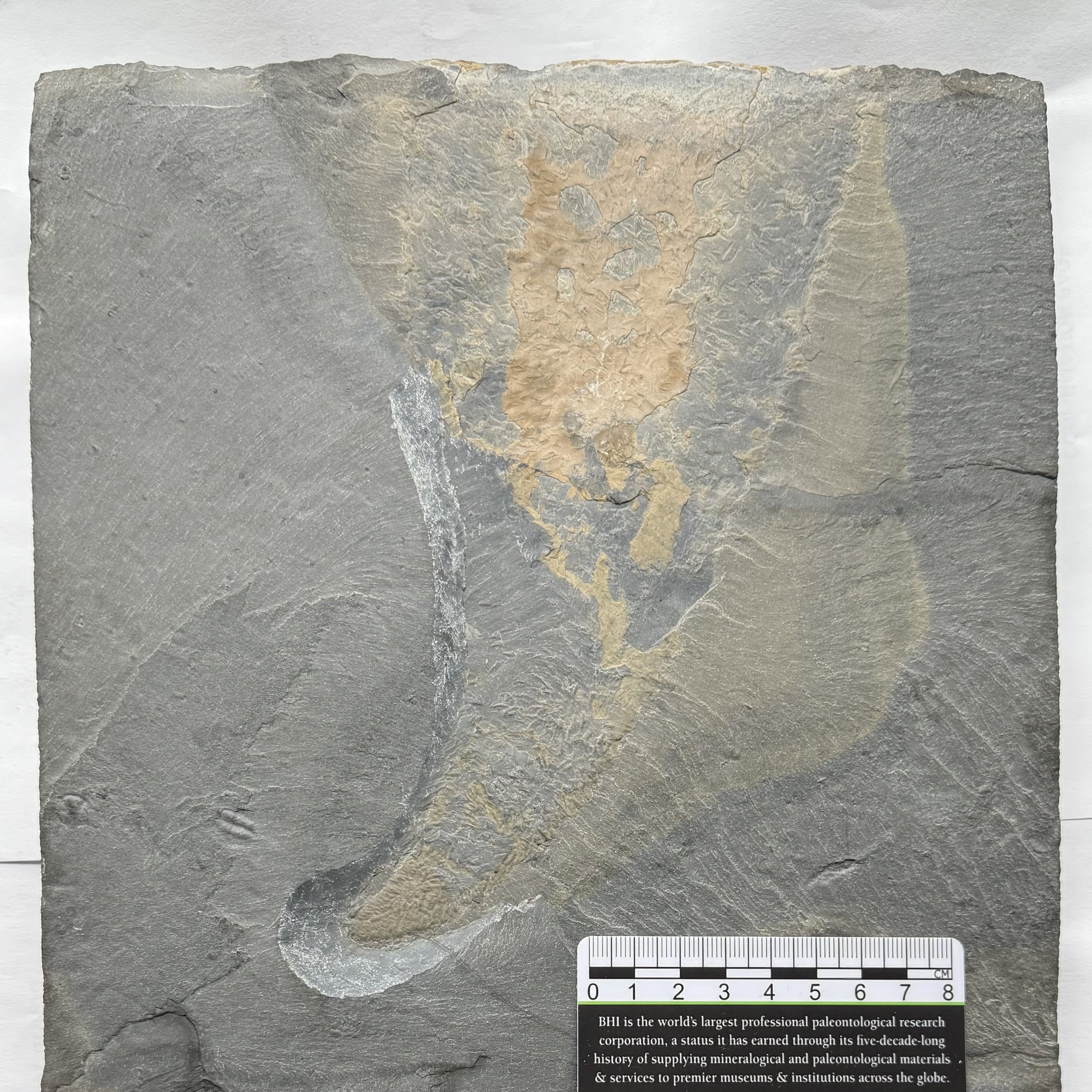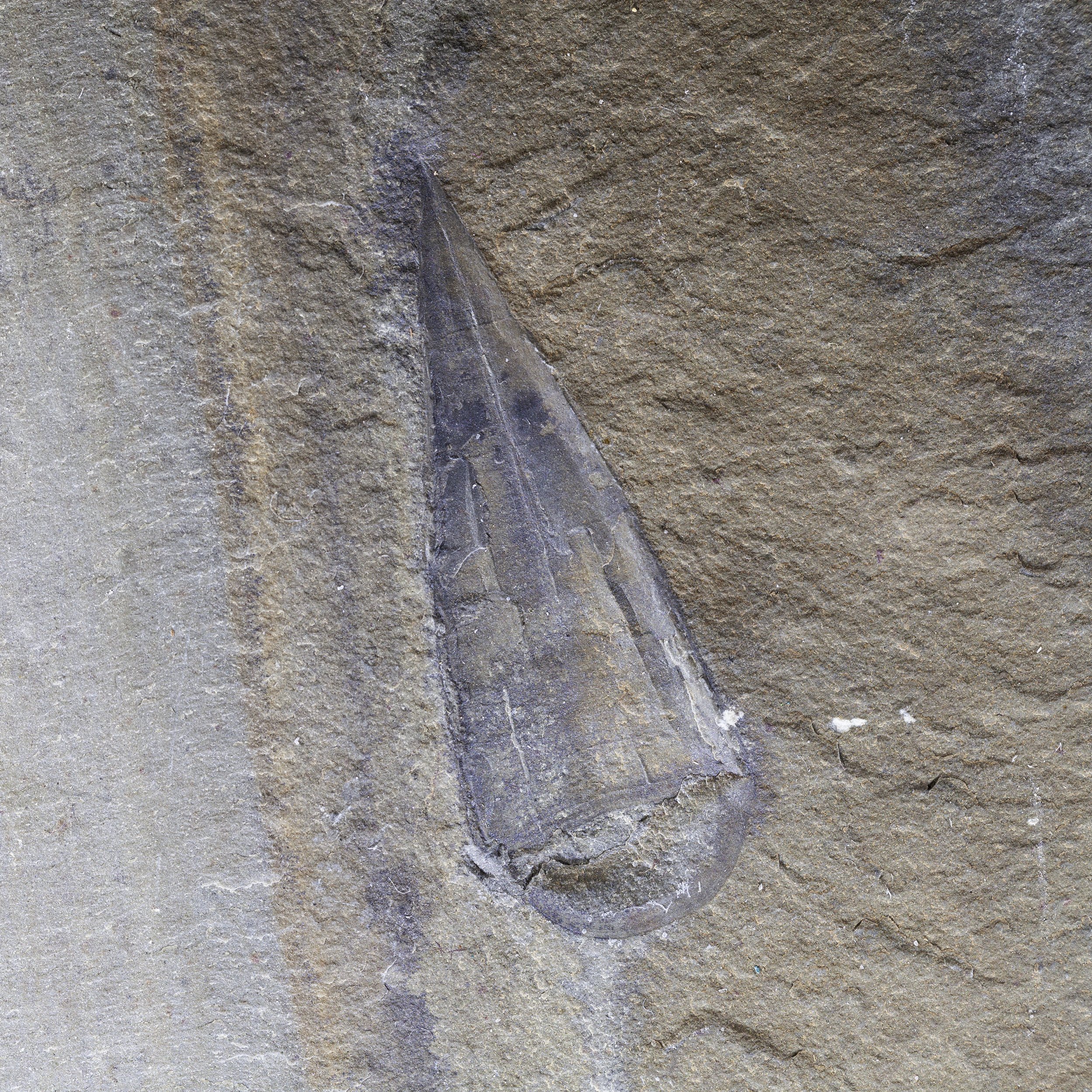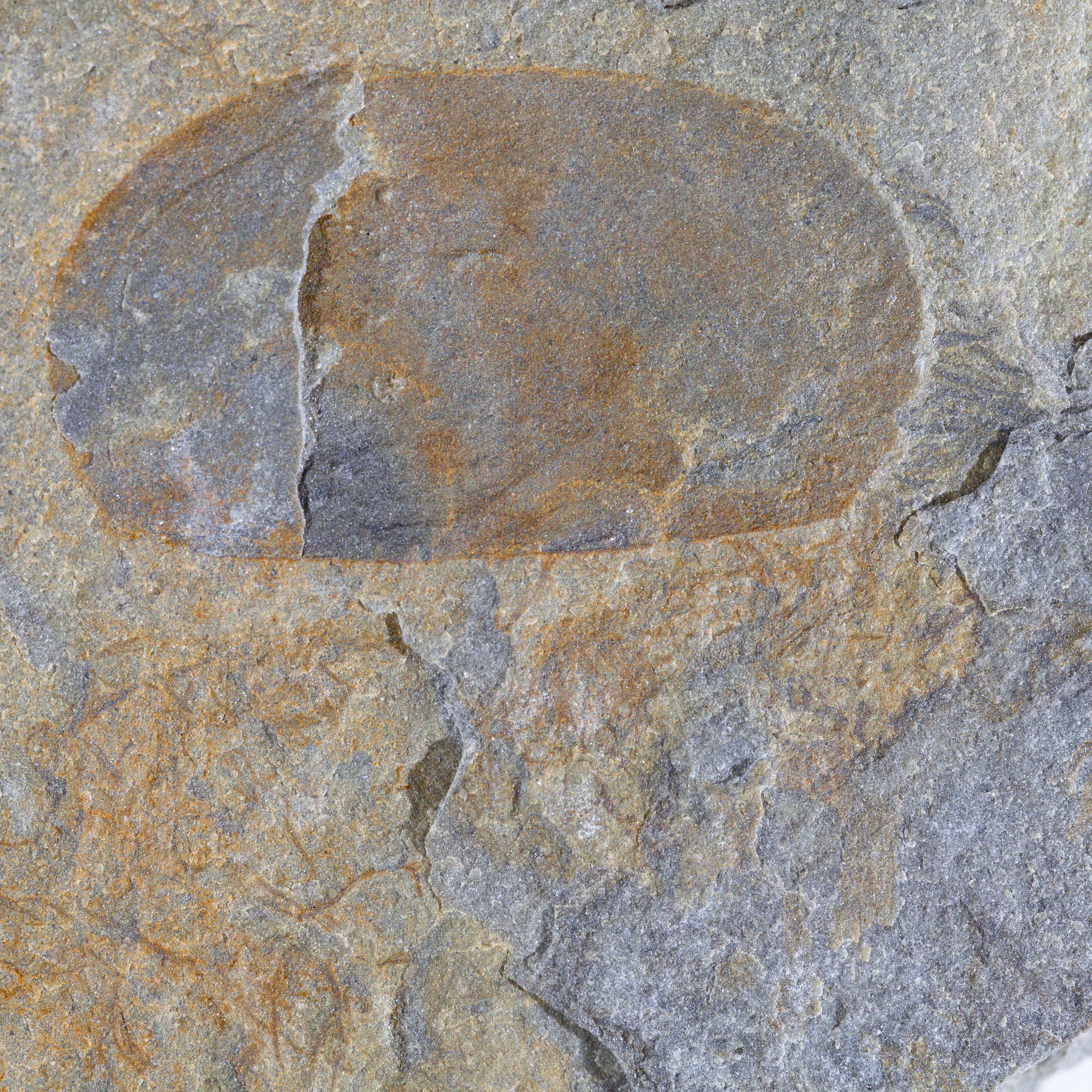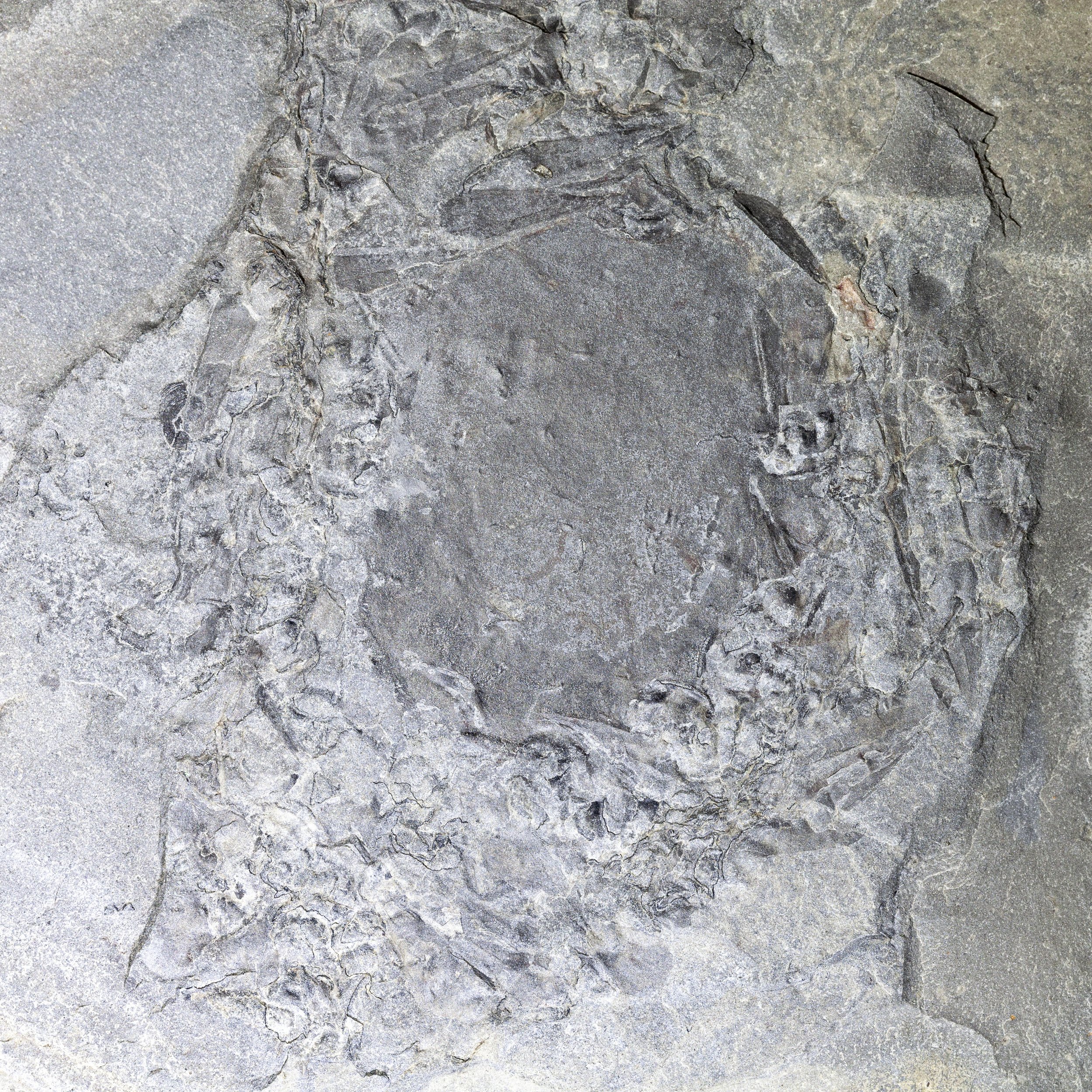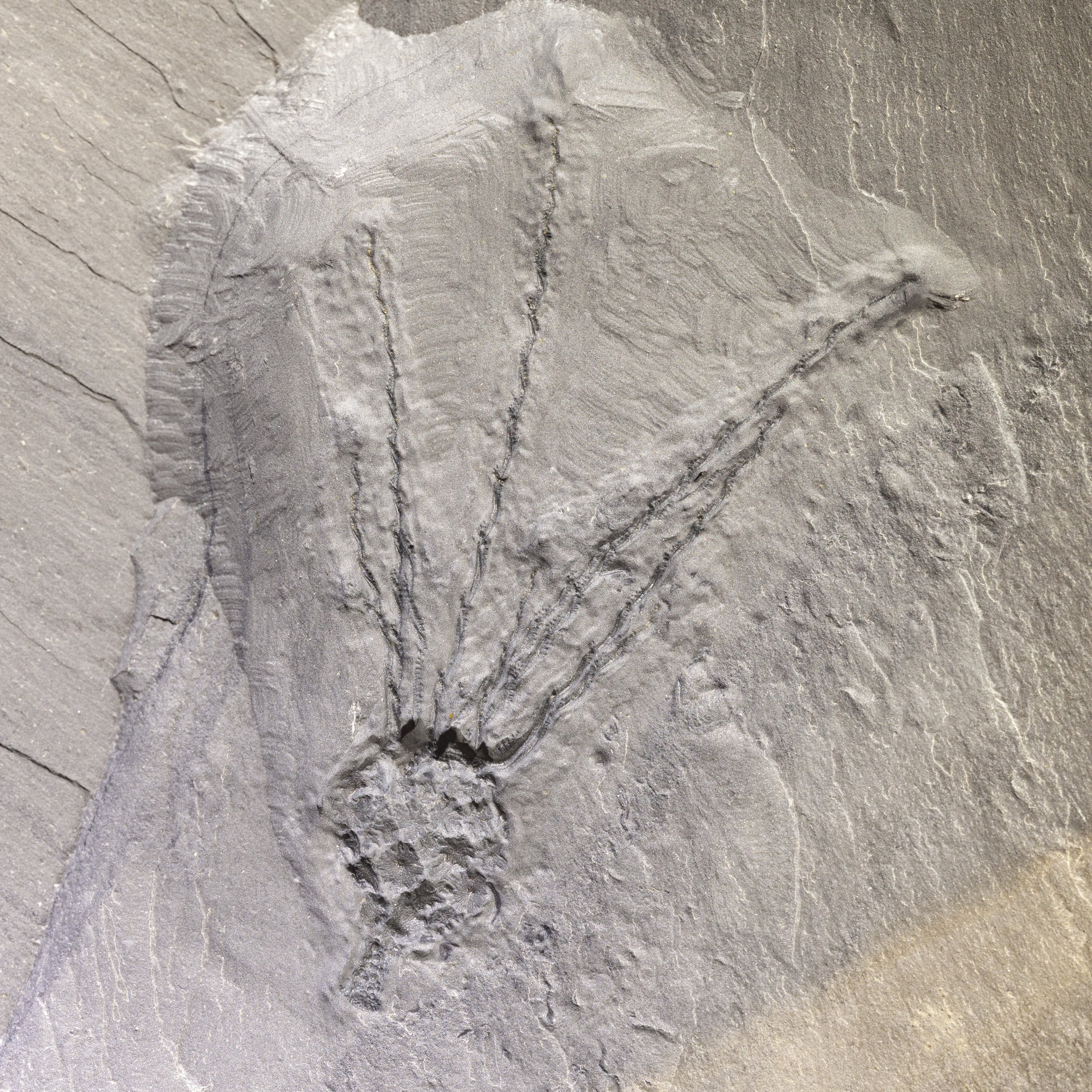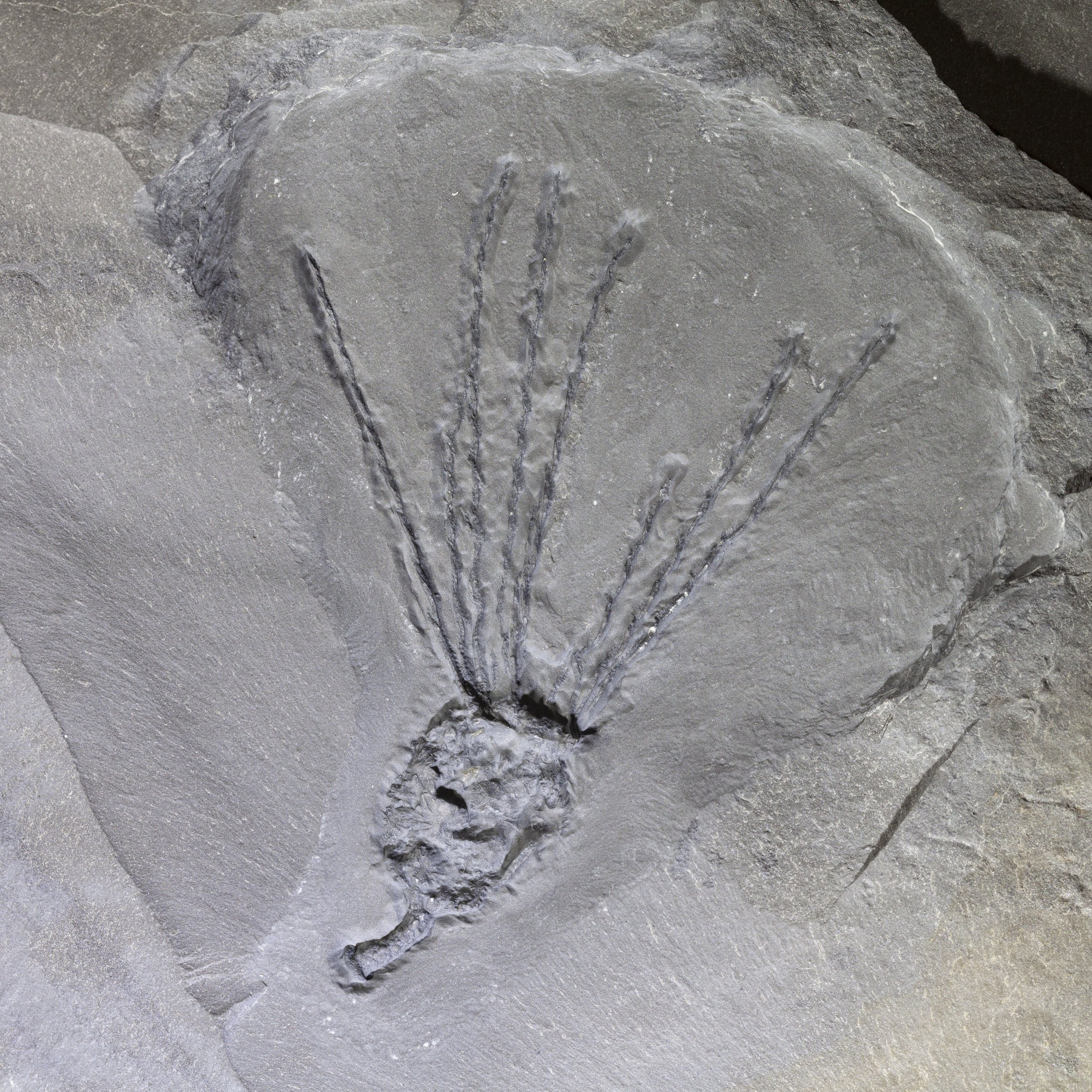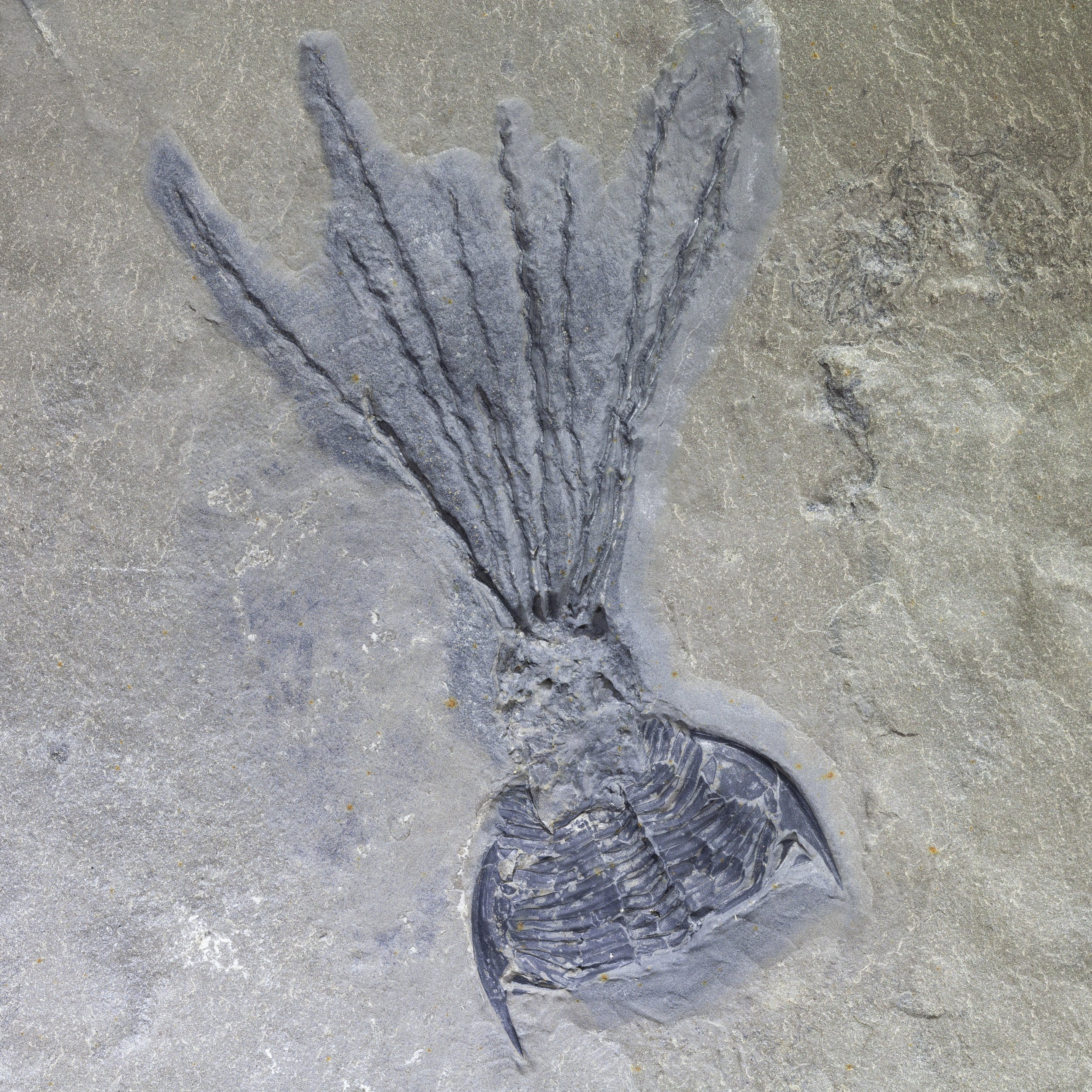Portalia mira
Vendor: Gold Bugs
SKU Number: SQ7886576
Portalia mira from the Middle Cambrian, Wheeler Shale Formation of Millard County, Utah.
The enigmatic Portalia currently defies a solid placement in any group amongst the Burgess Shale fauna.
This specimen is in lateral pose with the unmistakable features of elongate tentacle-like structures covering the entire surface. These structures tend to split into several simple branches. The rear of the fossil has preserved as a dark 'smear', often associated with Burgess Shale type fossils as a gut squeeze. This is an extremely rare offering.
Full dimensions are listed below.
Vendor: Gold Bugs
SKU Number: SQ7886576
Portalia mira from the Middle Cambrian, Wheeler Shale Formation of Millard County, Utah.
The enigmatic Portalia currently defies a solid placement in any group amongst the Burgess Shale fauna.
This specimen is in lateral pose with the unmistakable features of elongate tentacle-like structures covering the entire surface. These structures tend to split into several simple branches. The rear of the fossil has preserved as a dark 'smear', often associated with Burgess Shale type fossils as a gut squeeze. This is an extremely rare offering.
Full dimensions are listed below.
Vendor: Gold Bugs
SKU Number: SQ7886576
Portalia mira from the Middle Cambrian, Wheeler Shale Formation of Millard County, Utah.
The enigmatic Portalia currently defies a solid placement in any group amongst the Burgess Shale fauna.
This specimen is in lateral pose with the unmistakable features of elongate tentacle-like structures covering the entire surface. These structures tend to split into several simple branches. The rear of the fossil has preserved as a dark 'smear', often associated with Burgess Shale type fossils as a gut squeeze. This is an extremely rare offering.
Full dimensions are listed below.
Additional Information
So little is known of Portalia that finding any information outside of research papers is almost impossible. Even the Phylum is listed as Incertae sedis - or if you like "uncertain placement".
Charles Doolittle Walcott described this enigmatic organism as a holothurian echinoderm. A later interpretation has suggested it might be from the phylum porifera.






